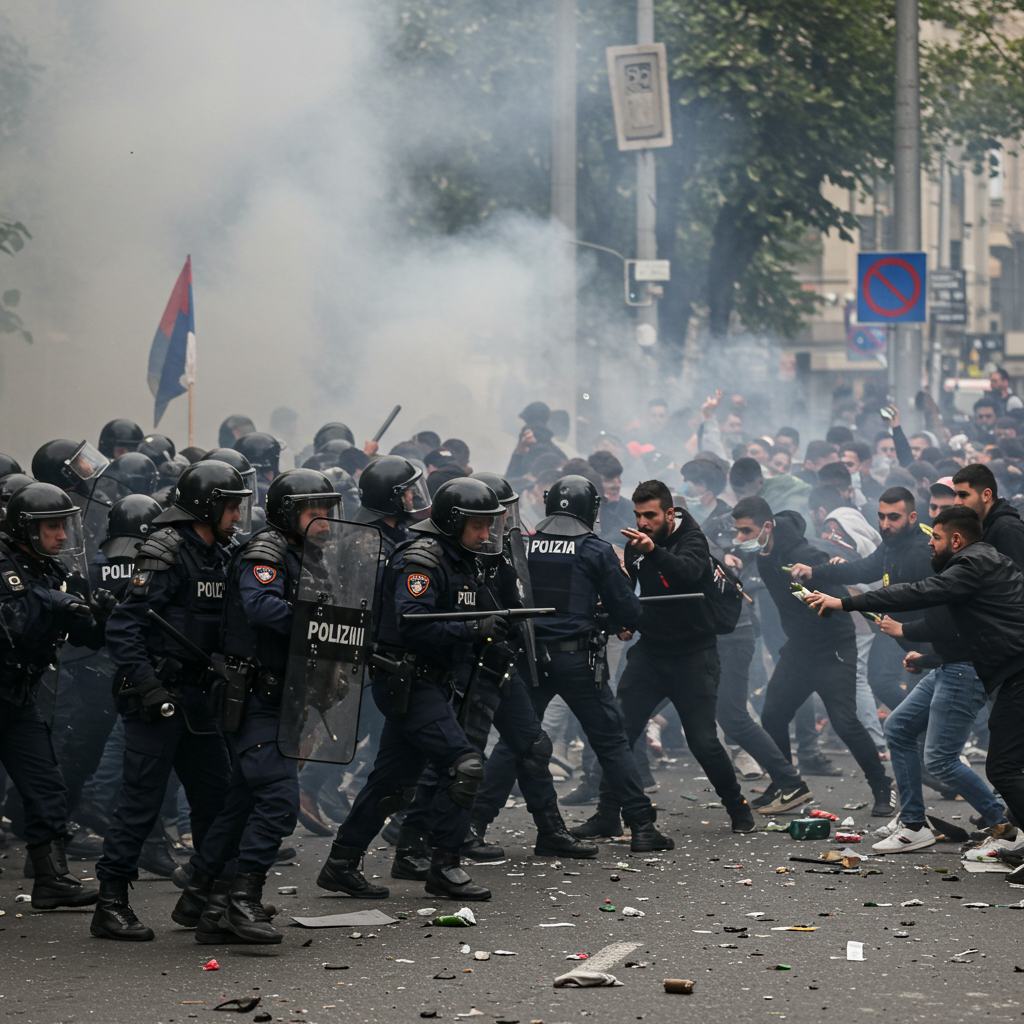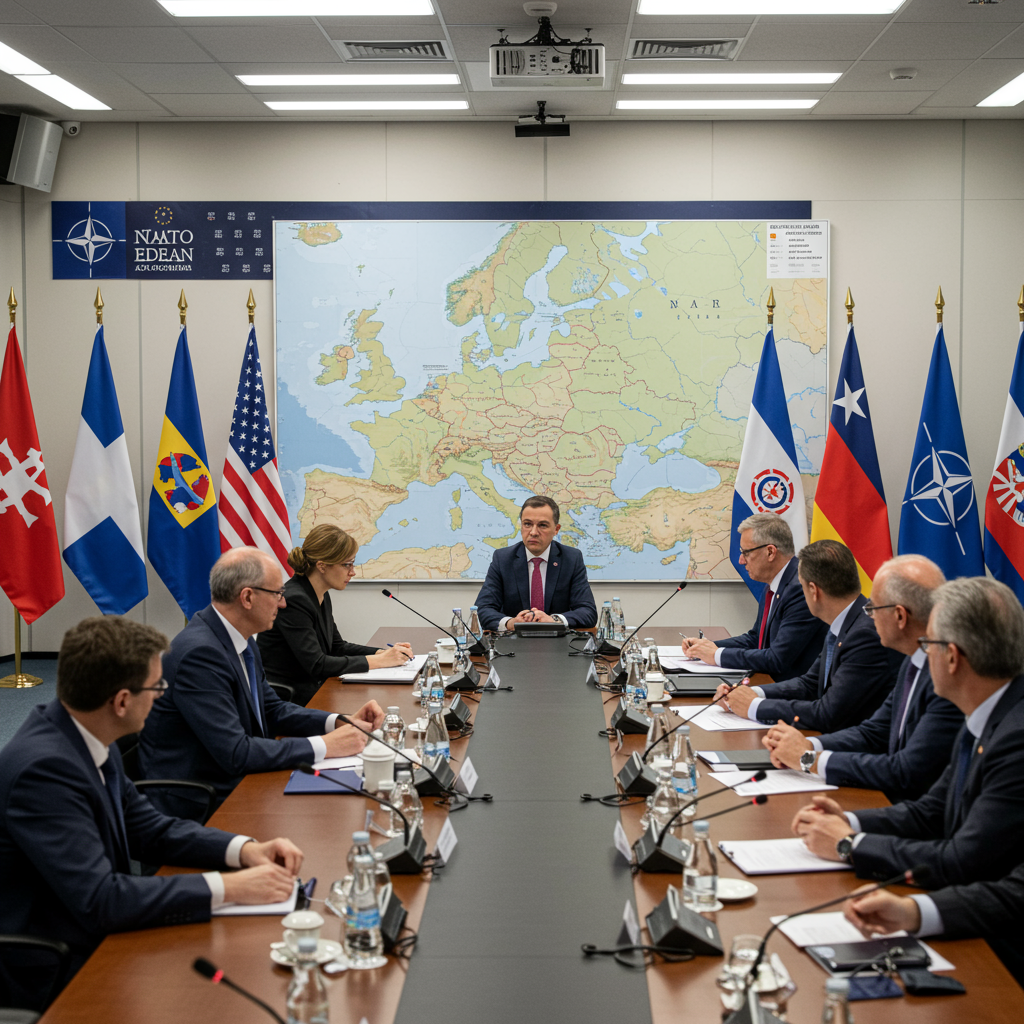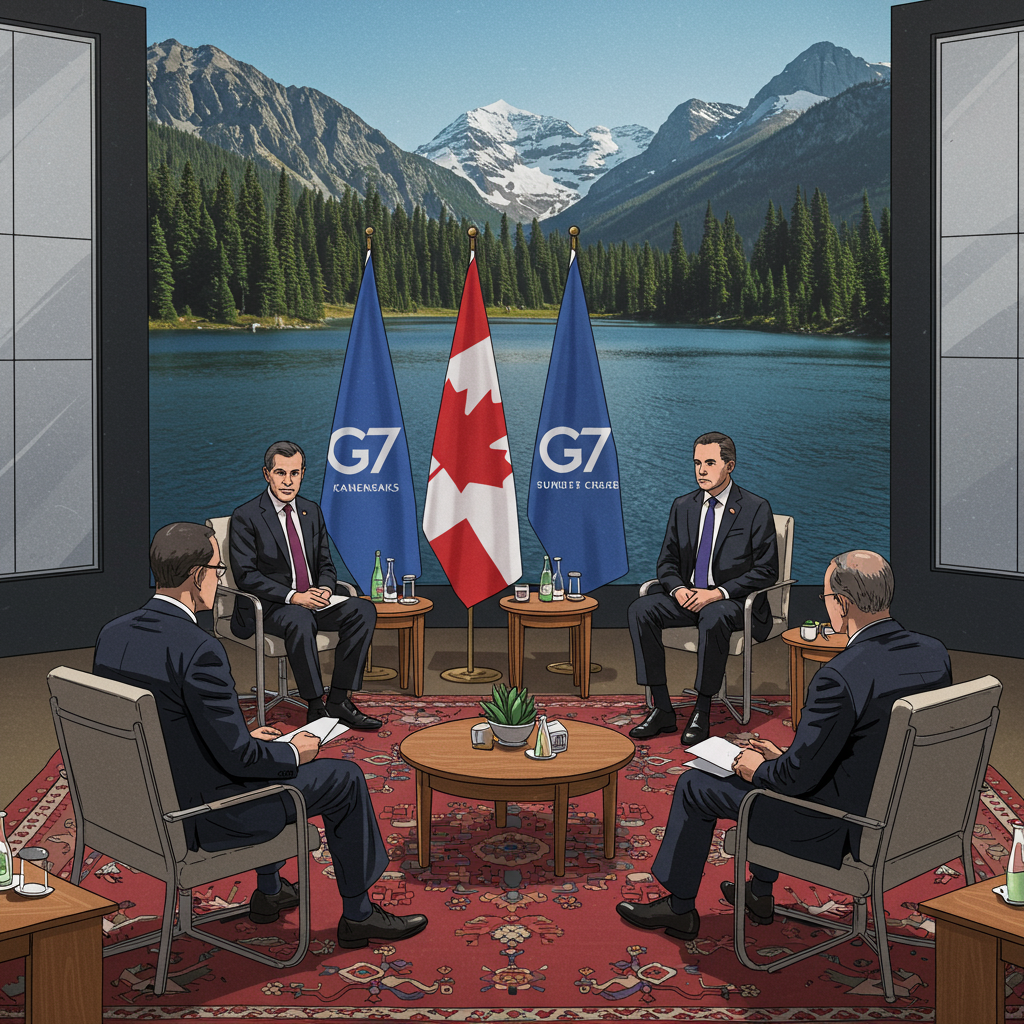Violent confrontations erupted in Serbia’s capital on Saturday, June 28, 2025, as Serbian police clashed with anti-government protesters in Belgrade. Demonstrators have demanded snap elections and an end to President Aleksandar Vučić’s lengthy tenure in power. This latest incident marks a significant escalation in months of widespread Serbian anti-government protests, which have become the country’s most extensive modern protest movement.
Authorities deployed a large number of officers in riot gear. Police cordoned off key areas around government buildings, the parliament, and nearby Pionirski Park. The clashes resulted in injuries on both sides and dozens of arrests, highlighting the deep political tensions gripping the nation.
Escalating Tensions in the Capital
Saturday evening saw protesters and police engage in direct conflict after months of simmering discontent across Serbia. The demonstration followed calls for significant political change and accountability from the government. Organizers had signaled a determination to continue applying pressure on the ruling administration.
Crowds gathered in central Belgrade, including Slavija Square. Independent monitors estimated the turnout at around 140,000 people. Police estimates were significantly lower, stating 36,000 attended the rally’s start. Many attendees chanted slogans like “We want elections!” expressing their core demand.
The Roots of the Movement
The current wave of Serbian anti-government protests began in December 2024. A devastating incident in Novi Sad served as a major catalyst. The awning of the city’s main train station collapsed, tragically killing 16 people. Protesters widely attributed this disaster to pervasive corruption and negligence in state infrastructure projects. This tragedy fueled public anger and became a focal point for the movement, which quickly gained momentum, particularly among university students.
Student groups have played a leading role in organizing these sustained anti-corruption demonstrations. They have specifically called for early parliamentary elections since May, frustrated by the government’s perceived inaction and accountability failures following the Novi Sad collapse.
Saturday’s Confrontations Unfold
The situation turned volatile as the formal protest rally concluded around 10 p.m. Reports indicate some anti-government protesters moved toward the area near Pionirski Park. This park housed a counter-protest and encampment by President Vučić’s supporters, present since mid-March.
Police lines blocked access to the park and other government locations. Demonstrators threw various projectiles at police, including bottles, rocks, and flares. Riot police responded using force to disperse the crowds. Authorities deployed tear gas, pepper spray, and stun grenades in multiple locations across the city center.
Injuries and Arrests Reported
The director of police, Dragan Vasiljevic, reported on Saturday night that clashes resulted in six police officers sustaining injuries. Several dozen protesters were also detained during the street battles. Later reports from Interior Minister Ivica Dačić on Sunday detailed a higher number of injuries. Dačić stated that almost 50 officers and more than 20 civilians were injured in the events.
Dačić confirmed that authorities arrested 77 protesters overnight. By Sunday, 38 individuals remained in custody. They faced potential criminal or misdemeanor charges. The police minister condemned the violence, vowing authorities would “take all measures to restore public order and peace.” He added that police would “repel all attacks.”
Government and Protester Reactions
President Vučić reacted to the events via social media. On Instagram, he wrote that “you cannot defeat Serbia with violence.” In a separate post, he commended police actions. He praised their “patriotic, serious approach” to handling the situation. He stated they worked to “defeat the attackers with minimal use of force.” Speaking to reporters, Vučić also suggested unspecified “foreign powers” were involved, attempting to “topple Serbia.” He warned that “thugs will face justice.”
Students leading the protest movement issued a statement. They accused the government of escalating tensions. The authorities “opted for violence and repression against the people,” their statement read. They placed responsibility for any radicalization of the situation squarely on the government. Organizers concluded the main rally by urging citizens to “take freedom into your own hands,” signaling continued action.
Demands for Snap Elections
A central demand from the movement is for snap elections Serbia. President Vučić and his ruling Serbian Progressive Party (SNS) have repeatedly rejected these calls. Vučić’s current second term is scheduled to end in 2027. The next parliamentary elections are also due in 2027. Despite holding a significant majority in the 250-seat parliament through his coalition, Vučić has resisted earlier voting.
Protesters remain determined to push for elections. Law student Stefan Ivakovic reportedly stated demonstrators would “not stop” and would rally “as long as it takes until the demands are met.” Sladjana Lojanovic, a farmer supporting the students, shared a common sentiment. She believed “institutions have been usurped,” citing extensive corruption. She saw elections as the necessary solution but expressed doubt Vučić would yield power easily.
Broader Political Context
The sustained Belgrade protest clash and the wider movement reflect deep-seated grievances. Opponents accuse President Vučić and his allies of various issues. These include alleged ties to organized crime and widespread corruption. Accusations also involve violence against political rivals and curbing media freedoms. The government denies these charges.
Critics argue Vučić has become increasingly authoritarian during his more than a decade in power. While Serbia is a candidate for European Union membership, its government maintains close ties with Russia and China. Notably, Serbia has not joined Western sanctions against Moscow following the invasion of Ukraine, a point of contention internationally.
In the days leading up to Saturday’s large rally, authorities took actions perceived as attempts to suppress the movement. Police arrested about a dozen activists. Charges included undermining the constitution and terrorism, which the activists denied. Several individuals from Croatia and a Montenegrin theatre director were reportedly denied entry into Serbia without explanation. The state railway company halted train service, citing a bomb threat; critics viewed this as an effort to prevent people from traveling to Belgrade for the protest. Vučić’s party also reportedly bused in supporters from other regions for their counter-mobilization. These actions underscore the high stakes involved in the political standoff.
Frequently Asked Questions
Why are people protesting against the Serbian government in Belgrade?
Protests in Serbia, particularly in Belgrade, stem from deep dissatisfaction with President Aleksandar Vučić’s government. A major trigger was the deadly Novi Sad train station roof collapse, widely blamed on corruption. Broader grievances include accusations of government corruption, ties to organized crime, suppression of media freedoms, and violence against political opponents. Demonstrators demand accountability and systemic change.
What happened during the recent protest clash in Belgrade?
On Saturday, June 28, 2025, a large anti-government protest in Belgrade escalated into clashes between demonstrators and riot police. After the main rally, some protesters moved toward areas near government buildings blocked by police. Protesters threw objects like bottles and flares. Police used tear gas and stun grenades to disperse crowds. The confrontations resulted in injuries to dozens of police officers and civilians, and authorities arrested many protesters.
What are the key demands of the Serbian anti-government protesters?
The primary demands of the ongoing Serbian anti-government protests center on political change. Demonstrators, led significantly by students, call for immediate snap parliamentary elections. They seek an end to President Aleksandar Vučić’s 12-year rule. Protesters also demand accountability for alleged government corruption, particularly highlighted by the Novi Sad train station disaster, and an end to practices they view as undermining democracy and free speech.
Conclusion
The violent Belgrade protest clash on June 28, 2025, underscored the persistent and volatile political crisis in Serbia. Months of anti-government demonstrations, initially sparked by the Novi Sad tragedy and fueled by corruption allegations, culminated in direct confrontations between citizens and police. Despite government accusations of foreign influence and attempts to suppress dissent, protesters remain resolute in demanding snap elections and an end to President Vučić’s lengthy tenure. The high number of injuries and arrests signals the intense pressure on both sides. As the movement continues to challenge the government’s authority, the potential for further escalation remains a significant concern in Serbia’s immediate future. The standoff between the government and the broad coalition of protesters, including students and citizens frustrated by the status quo, shows no signs of easy resolution.




